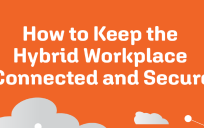The concept of public agencies delivering services to one another is nothing new, but doesn’t happen as often as it could. Policy wonks, the media, elected officials, and agency managers all agree the concept makes sense: One public organization does something well, and shares that expertise with another public agency, at a cost that provides some savings over the alternatives. It’s more efficient, and overhead costs are spread around. Everyone is happy.
Reality is a bit more complex. There can be initial political hurdles and turf wars. There can be governance challenges, if cities come together to form an independent agency to deliver services to the group. Over time, one side or the other can start to feel they are getting the raw end of the bargain. And if it doesn’t work out, the breakup can be painful.
When shared services works best is when it is founded on with great professional relationships. These relationships can be between managers in the involved organizations, or among staff on the front lines. When sharing starts in this context, it often starts over lunch or coffee, and conversation about how two or more cities could do better together. Or sometimes one agency’s leader hears about a great program her friend is working on in the next county, and wonders if they’d be willing to duplicate the program in her own agency.
Starting from relationship means starting from a place of trust and respect in how the other party will honor its commitments, and work hard to make the shared services successful. One party isn’t in a superior position; these are colleagues that share the public’s best interests at heart, and are finding creative ways to provide public service in a better way, and hopefully at a lower cost. From this starting point, then it’s just a matter of determining how the service delivery model would work, and if it makes sense financially for everyone involved.
My city has an award-winning GIS team that has started providing GIS consulting services to other cities. Our first client is the Town of Yountville, California, a charming Napa Valley wine-country paradise that’s located nearly 500 miles away. What would start a shared services agreement with them? It started with conversations between city leaders who know each other well, and grew from there. Our team has been honored to serve as part of the Yountville team, and we are generating revenue to offset our own GIS program costs. As the customer, Yountville is building a great GIS program with our world-class staff, making Yountville’s ideas and projects happen in partnership with their employees. We hope to build on this model and work with other cities and agencies in the coming years to expand their use of GIS.
Sharing services between public agencies works when the people in those agencies have a true relationship. Even with government as the customer, it’s still about people, and how they work together.
Lori Sassoon is part of the GovLoop Featured Blogger program, where we feature blog posts by government voices from all across the country (and world!). To see more Featured Blogger posts, click here.





Excellent post, Lori!
Information sharing and interagency collaboration are integral aspects to better serve the public. Moreover, this approach saves money for taxpayers and public sector agencies by avoiding duplicative practices and procedures. In short, you identify a best practice that should be leveraged more widely gov-wide. Thanks for the great advice.